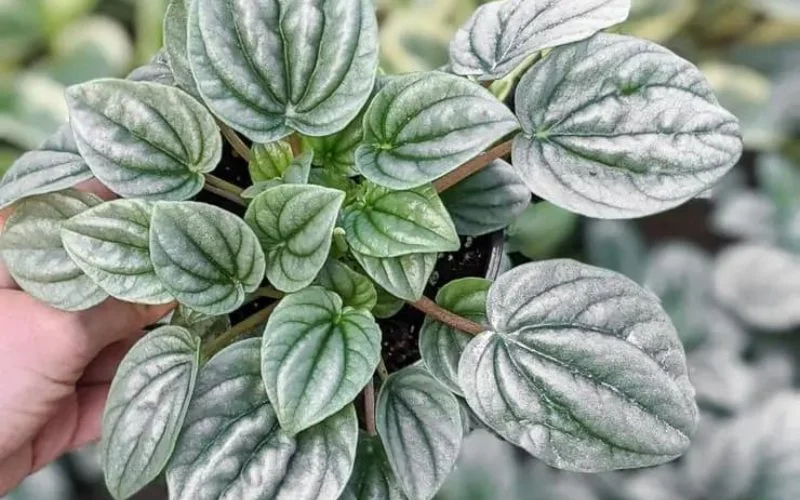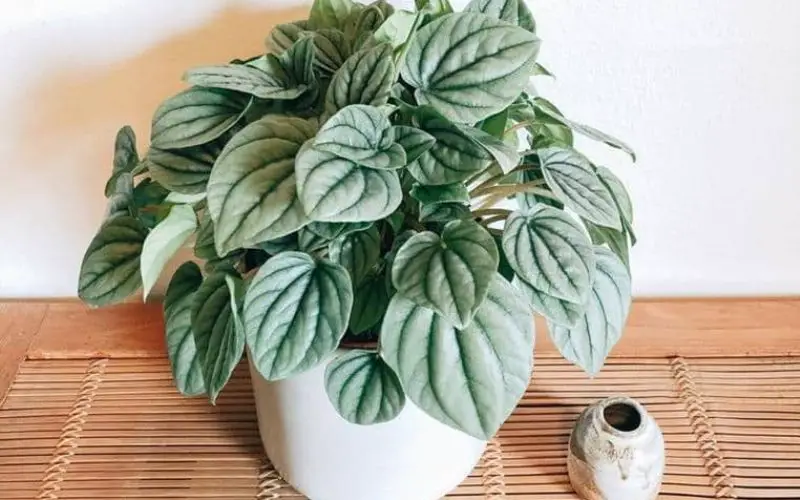If you are considering any decorative plant for your home, peperomia frost is probably on your list of plants.
Its silvery-green color makes it beautiful, but every homeowner has one question before buying this plan. Is peperomia frost easy to care for? Fortunately, this is a low-maintenance plant that adds to the beauty of your house at a low cost.
This article tells you all you need to know about the peperomia frost plant, how to care for them, and some common problems you may encounter with this plant.
Is peperomia frost easy to care for?

Instead of peperomia frost, this plant is sometimes called peperomia silver because of the hint of silver highlights on its leaves. It is also known for being easy to care for, as it has been said that an inexperienced person can care for this plant with ease.
This kind of plant doesn’t grow large. Instead, it stays small even at maturity, giving you a wide range of options regarding where to position this plant for decoration. Here is a detailed guide on how to care for this plant in your home.
Watering
This plant is known to be a native of the rainforest. However, it doesn’t require a lot of water to thrive. Peperomia frost only requires more water during its period of growth, which is during summer and spring. On other days, it is best to water it when at least the top half of the soil is dried off.
To properly water this plant, position it underneath the tap on your sink and allow it to be filled with water. Do this until the excess water starts to leak from the drainage holes. If your plant does not have drainage holes, create some to prevent overwatering. Do not allow the pot to sit in water or allow the plant to be damp all the time. It could result in the growth of fungi which can kill the plant.
Light
Peperomia frost grows optimally in an environment that receives indirect light. The best position for this is an east or west-facing window that receives adequate morning sunlight. Exposure to full sunlight is terrible for this plant and is not healthy, and although it can survive under lower light, its growth will be slow, producing flat and shorter leaves.
Keep this plant in a shaded area when the afternoon sun is out. That is because the light at this time of the day is intense and can burn or scorch the leaves of this plant. To prevent this, install a curtain over the windows where these plants are positioned, or you can move them to an area of more excellent shade.
Temperature
Peperomia frost loves a warm environment. Hence it will do well in a region with a temperature range of 65 to 75 degrees Fahrenheit (18.3 degrees Celcius to 23.8 degrees Celcius) or room temperature. However, they still grow well in slightly lower or higher temperatures ranging from 60 to 80 degrees Fahrenheit (15.6 degrees Celsius to 26.7 degrees Celcius).
As these plants love warm environments, they don’t do well in cold environments. During winter, exposure to the cold will lead to the death of the leaves, so we recommend that you don’t allow this plant to stay in an environment with a temperature of fewer than 55 degrees Fahrenheit (12.8 degrees Celcius).
If you live in a warm region throughout the year and receive the right amount of sunlight that suits this plant, then you can position them in outdoor areas.
Humidity
Naturally, this plant adjusts to the humidity of your living space. That is because, in its native region, the air is usually damp, but it tolerates some dryness. However, their ideal environment has a high humidity which relates to the warm temperature of the environment.
You can raise the humidity of the environment in various ways, and you can accomplish this by using a humidifier, placing the post on a pebbled tray, or misting it. It is essential to keep the area ventilated even with the high humidity. It ensures that you don’t create a breeding ground for diseases.
Soil requirements
Peperomia frost has an essential soil requirement. It requires well-drained, aerated, and moderately moist soil with a pH that ranges from 6 to 6.6, which is mildly acidic. However, pH is not a priority as they grow well in neutral and slightly acidic environments, provided the soil is well-drained. It is why it is essential to have drainage holes on the pot of this plant.
The ideal soil mix that meets these conditions contains equal parts of peat moss and perlite in a ratio of 50:50. Occasionally, orchard bark is added to this mix to help the soil stay moist without being soggy.
Fertilizer
Like most plants, peperomia frost needs fertilizer to supply it with the essential nutrients it needs. However, only a moderate quantity of these nutrients is needed for optimal growth. Any all-purpose fertilizer will be suitable for this plant, and whether it is solid or liquid, it should be diluted to half of its recommended strength and applied once every four months.
During winter, this plant is dormant and experiences slow growth. Fertilizing it at this time will only lead to fertilizer buildup, which can cause root burn. Feed them fertilizer appropriately and during their growing season only.
Conclusion
Peperomia frost is a famous plant people consider to decorate their living space, and the best part is that it is easy to take care of. This article should have revealed the basic guidelines for caring for this plant, as well as what you should do and shouldn’t.
To keep this plant in its best condition, prioritize creating a well-drained environment for it and soil that is moist but not soggy. You should also ensure that it receives indirect sunlight in the morning and complete shade at noon.
Helpful Links:
- How many Heads of Broccoli Per Plant
- How to Plant a Pineapple Head
- Can you Plant a Sunflower Head
- What is the Best Ground Cover for Under Pine Trees?
- How many Heads of Cauliflower Per Plant
As for fertilizing, this should be done once every four months during the growing season, and you may go for instant fertilizer or slow-release fertilizer.
If you liked this article, then please follow us on Facebook, Instagram and Pinterest.

